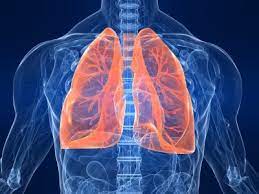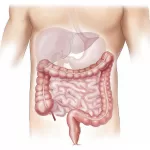WHO welcomes the overarching recommendations of The Lancet COVID-19 Commission’s report on “Lessons for the future from the COVID-19 pandemic,” which align with our commitment to stronger global, regional and national pandemic preparedness, prevention, readiness and response. At the same time, there are several key omissions and misinterpretations in the report, not least regarding the public health emergency of international concern (PHEIC) and the speed and scope of WHO’s actions.
WHO welcomes the Commission’s endorsement of a pandemic agreement, strengthening the International Health Regulations (IHR), and enhancing financing. These issues are core to the vision of WHO Director-General, Dr Tedros Adhanom Ghebreyesus, as distilled in the five priorities for his second term. WHO and its Member States are already enacting these recommendations. The World Health Assembly agreed a historic decision in May 2022 to sustainably finance WHO.This year will see two rounds of public hearings for a pandemic accord take place.
The Commission strongly endorses WHO’s central role in global health, arguing that “WHO should be strengthened” and that reforms “should include a substantial increase of its core budget.”
WHO echoes the Commission’s conclusions that COVID-19 exposed major global challenges, such as chronic under financing of the UN, rigid intellectual property regimes, a lack of sustainable financing for low- and middle-income countries, and “excessive nationalism,” which drove vaccine inequity.
The Organization also agrees with the focus on biosafety, as shown by the formalization of our Technical Advisory Group on biosafety, the publication of our Laboratory biosafety manual – now in its 4th edition – and the publication on 13 September this year of a life sciences framework to help mitigate bio risks and safely govern dual-use research.
WHO places similar emphasis on the importance of multilateralism, solidarity and cooperation when facing pandemics. We also welcome the recognition of the key role that countries themselves play.
Many of the Commission’s recommendations align with those received over the past two years from review bodies set up by WHO itself, such as the Independent Panel for Pandemic Preparedness and Response (IPPPR), the Independent Oversight and Advisory Committee for the WHO Health Emergencies Programme (IOAC) and the IHR Review Committee, as well as assessments from other entities. As we are a learning organization, we established a dashboard of recommendations from these initiatives and others to track their implementation by WHO and others.
WHO’s rapid response
The Commission does not, however, convey the full arc of WHO’s immediate, multi-year, life-saving response, detailed below:
- On 30 December 2019, WHO received the first alerts of cases of pneumonia of unknown cause in Wuhan, China, and notified the IHR focal point, seeking further information from Chinese health authorities the next day.
- On 1 January 2020, WHO activated its Incident Management System to manage daily action. The team, which includes focal points on clinical care, infection prevention and control, diagnostics, logistics, communications and more, met daily throughout 2020, into 2021 and continues to meet this year.
- On 5 January 2020, WHO issued a global alert to all Member States through a formal IHR system – the Event Information System – based on our initial risk assessment of the situation in China. This alerted Member States and advised them to take measures to identify cases, care for patients, and prevent infection and onward human-to-human transmission for acute respiratory pathogens with epidemic and pandemic potential. This was WHO’s first global warning to take concrete measures for an unknown respiratory disease. WHO has consistently driven knowledge-sharing through dedicated briefings for countries, during which the critical experiences of early-affected countries were shared and the elements of WHO’s comprehensive response were outlined.
- On 9 January 2020, WHO convened the first of many teleconferences with established global expert networks, to discuss all available information on the cluster reported from China. These networks enabled the real-time exchange of direct knowledge, experience and early study findings, which fed directly into WHO’s early advice and recommendations.
- Between 10 and 12 January 2020, WHO published a comprehensive package of technical guidance for countries. This package covered how to test for a high threat respiratory coronavirus, treat patients for severe acute respiratory infection, inform the public to prevent infection and human- to-human transmission, and to prepare health systems to deal with more cases.
- On 13 January 2020, WHO published the first protocol to develop PCR tests to identify cases based on the release of the full genome sequence two days earlier. By 2 February 2020, WHO began shipping validated PCR assays to countries around the world.
- On 22 and 23 January 2020, when there were nine cases and no deaths reported outside China, the Director-General convened the Emergency Committee (EC) under the IHR to meet, and advise whether the event constituted a public health emergency of international concern (PHEIC). The Committee advised that it did not. The Director-General said publicly: “Make no mistake. This is an emergency in China, but it has not yet become a global health emergency. It may yet become one”.
- From 27 to 28 January, following the EC, the Director-General and senior staff travelled to China to meet with top government officials, gather information about the outbreak and seek cooperation.
- On 30 January 2020, when there were 98 reported cases (and no deaths) in 18 countries outside China, the Director-General reconvened the Emergency Committee. It advised that the outbreak constituted a PHEIC. The DG took their advice and declared a PHEIC, issuing temporary recommendations for how countries could further prepare and respond.
- On 4 February 2020, WHO’s Strategic Preparedness and Response Plan (SPRP) was published. It outlined comprehensive measures all countries needed to take to suppress transmission and save lives, using a package of interventions including early identification and isolation and care of cases, contact tracing and supported quarantine, use of medical masks, distancing, ventilation, infection prevention and control in health facilities, taking a risk-based approach to small and large gatherings, and for travel.
- Following regular media briefings held in January, daily briefings began on 5 February 2020. Media briefings continue on a weekly basis, alongside regular live social media conversations with senior WHO experts, demonstrating the priority placed on communicating with leaders and the public.
- From 11 to 12 February 2020, WHO led a Global Research and Innovation Forum on the new virus, convening nearly 900 experts and funders from more than 40 countries, to take stock of what was known about the novel coronavirus and to set the agenda going forward. A follow-up achievement was WHO’s Solidarity trial, which became one of the largest clinical trials for COVID-19 therapeutics, involving more than 30 countries, over 14 000 patients and nearly 500 hospitals at its peak.
A comprehensive and detailed list of actions taken by WHO during the COVID-19 response can be viewed in our interactive timeline.
From day one and to this day, WHO, together with our global expert networks and guideline development groups, regularly updates our guidance and strategies with the latest knowledge about the virus, including updates to the SPRP and the COVID-19 global vaccination strategy, and to the 11th version of WHO’s living guideline on COVID-19 therapeutics, which was published in July 2022.
WHO played, and continues to play, a vital role in getting COVID-19 tools to countries in need, not least through joint endeavours such as the ACT-Accelerator, Pandemic Supply Chain Network (PSCN) and UN COVID-19 Supply Chain Task Force. Lab testing capability in African nations rose dramatically over six months, thanks to support from WHO. Only two countries on the African continent had COVID-19 testing capacities at the start of 2020; by mid-year, all 54 countries had them. WHO has supported 18 countries globally to set up plants for medical oxygen.
Throughout the pandemic, the Director-General has repeatedly called for leaders to take actions to protect people and share tools equitably when addressing the world’s most important fora, such as the February Munich Security Conference; the extraordinary G20 Leaders Summit of March 2020; the G7 Summit of June 2021, where the 70% vaccination target was announced; and Global COVID-19 Summits co-hosted by the Biden Administration in September 2021 and May 2022.
Regarding the areas of WHO’s response focused on by the Commission, WHO would like also to highlight the many day-to-day steps, including the following:
- WHO repeatedly warned of the potential of asymptomatic human-to-human transmission, particularly pre-symptomatic transmission, including in late January in updated surveillance guidance, in protocols for enhanced surveillance on 29 January (defining a contact as someone with exposure 1 day before symptom onset of a case) and 4 February (changing a contact to someone with exposure up to 4 days before symptom onset of a case), at its Executive Board on 4 February, in guidance documents from 23 and 28 February 2020, in its China mission report and media briefings. WHO issued guidance and enhanced surveillance protocols early in the pandemic to identify contacts among people prior to the development of symptoms.
- The IHR recognize the sovereign rights of State Parties to introduce restrictions on travel. From the very beginning of the COVID-19 response, WHO recommended many measures countries should take, including screening at entry points.
- At the beginning of the pandemic, dramatic global supply constraints saw health workers around the world scrambling to find basic supplies to protect themselves. WHO’s early priority was getting access to masks for those most at-risk around the world; we initially recommended the use of medical masks for anyone with symptoms, anyone caring for someone sick, and frontline health workers. Our logisticians and other UN partners were central in activating the pandemic supply chain and increasing global supplies.
- WHO guidance published on 10 January 2020, outlined respiratory precautions – including airborne precautions – in health-care settings. WHO guidance addressing many forms of transmission including zoonotic, droplet, airborne, short- and long-range aerosol, fomite, and vertical transmission, along with specific recommendations to prevent such transmission in different settings (such as health facilities, schools, workplaces), was updated and expanded regularly throughout the pandemic based on emerging evidence. WHO is leading and coordinating a multi-agency, multidisciplinary, international technical consultation process to discuss and reach a consensus on pathogens that transmit through the air, with a wide range of global experts and international and national agencies.
Looking ahead
The pandemic is not over, though the end is in sight, and WHO continues its response, while laying a stronger foundation for the future:
- Daily meetings of experts continue in order to update and streamline strategies and guidance. WHO-supported research continues. Helping countries access vaccines continues. Setting up oxygen plants continues.
- At the World Health Assembly in May 2022, the Director-General presented WHO’s proposals, developed in consultation with Member States and other stakeholders – taking into consideration the over 300 recommendations from review bodies and panels – to strengthen the architecture for Health Emergency Preparedness, Response and Resilience.
- In early September 2022, the financial intermediary fund for pandemic prevention, preparedness, and response was officially launched. This will provide long-term financing to strengthen these capabilities in low- and middle-income countries and address critical gaps.
- Through the Intergovernmental Negotiating Body to draft and negotiate a WHO international instrument on pandemic preparedness and response, WHO is hosting public hearings, the first since those that fed into the WHO Framework Convention on Tobacco Control (which entered into force in 2005).
- WHO continues to actively pursue the search for the origins of SARS-CoV-2, with July 2021 marking the establishment of a permanent international Scientific Advisory Group for Origins of Novel Pathogens, or SAGO, which covers both SARS-CoV-2 and future new pathogens.












